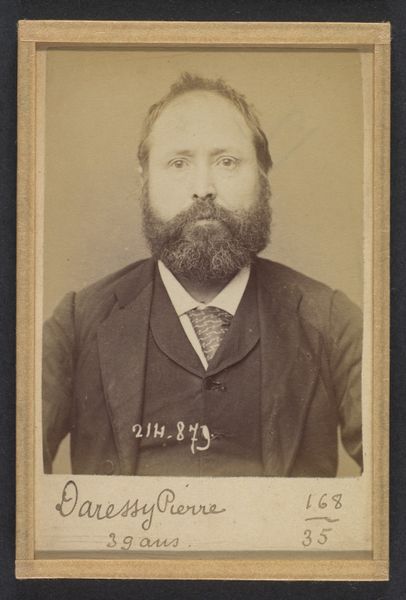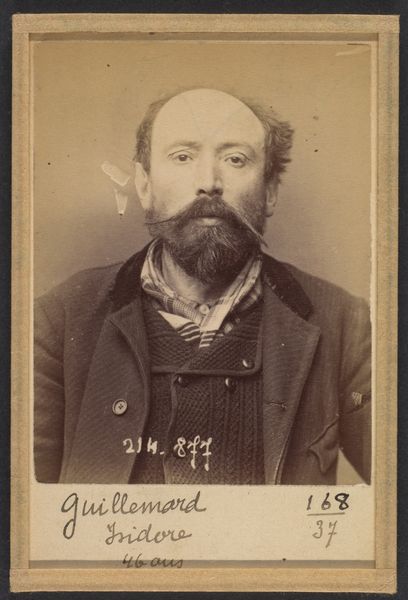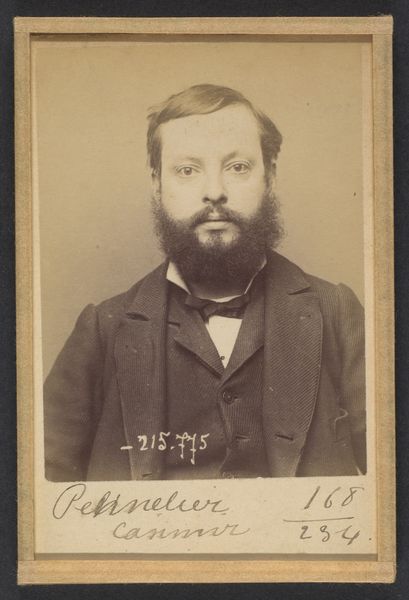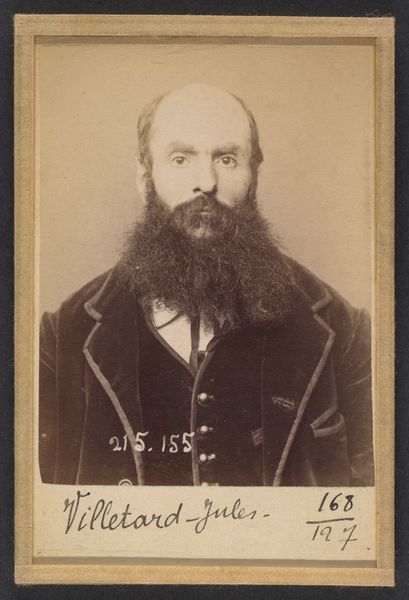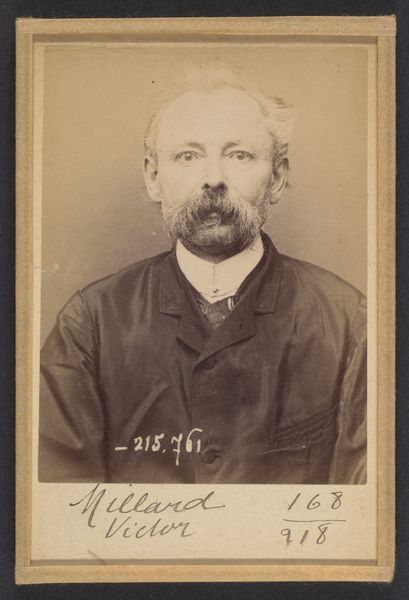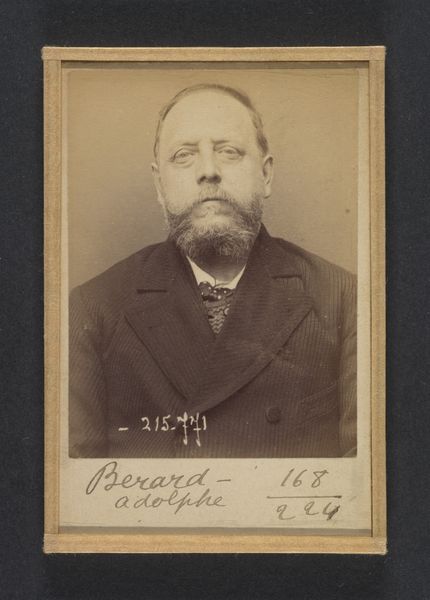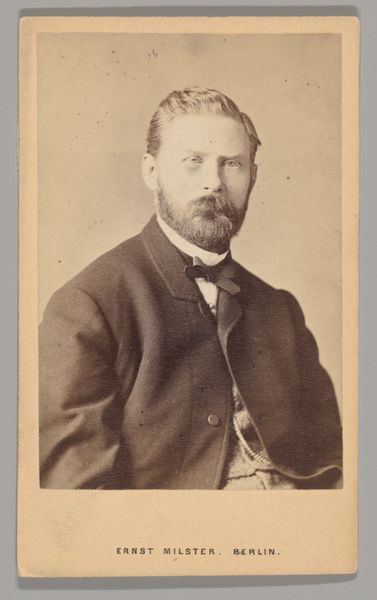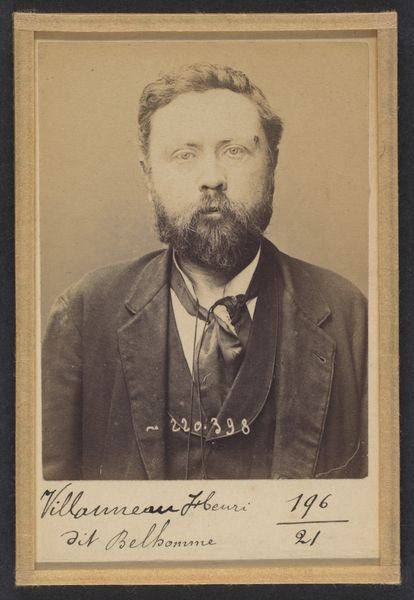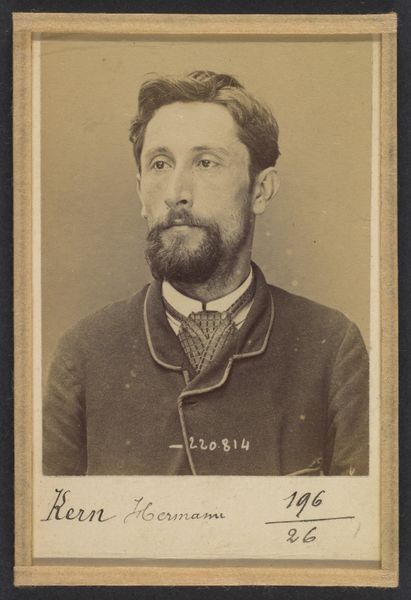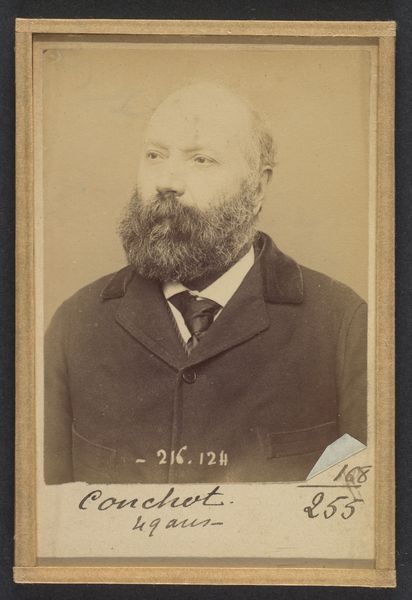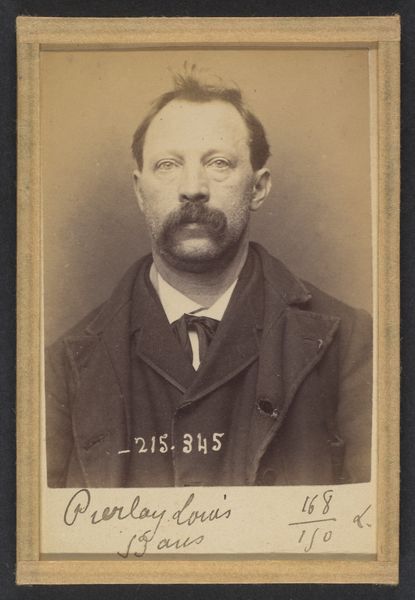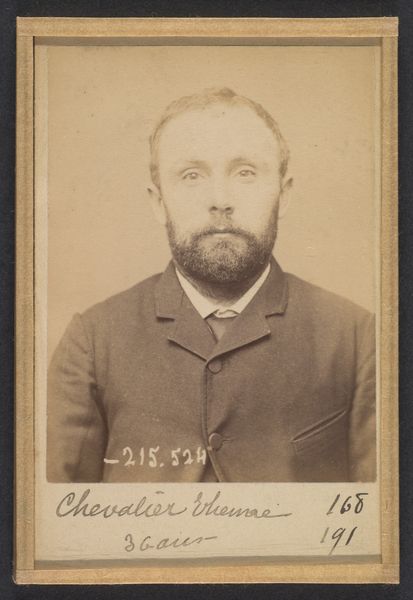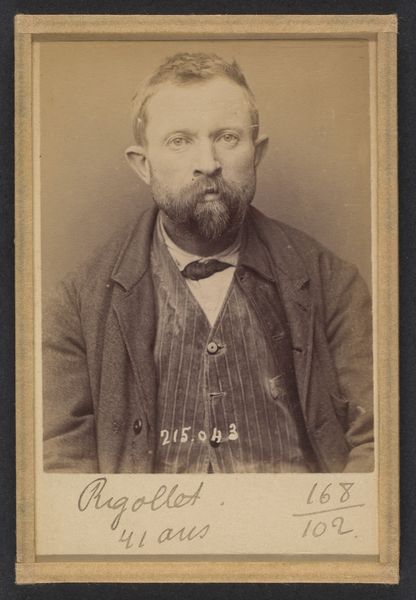
Toulet. Guy, Flavien. 41 ans, né à Boufler (Somme). Entrepreneur de peinture. Anarchiste. 23/3/94. 1894
0:00
0:00
photography, albumen-print
#
portrait
#
portrait
#
photography
#
albumen-print
#
poster
Dimensions: 10.5 x 7 x 0.5 cm (4 1/8 x 2 3/4 x 3/16 in.) each
Copyright: Public Domain
Editor: This albumen print, dated 1894, is titled "Toulet. Guy, Flavien. 41 ans, né à Boufler (Somme). Entrepreneur de peinture. Anarchiste. 23/3/94." and credited to Alphonse Bertillon. It feels like something out of a police file. The subject's gaze is averted, and there's a stark, almost clinical quality to the image. What's your interpretation of this work? Curator: You're right to pick up on the 'police file' feel. Bertillon was the head of criminal identification for the Paris police, and he pioneered using photography for identification, which he termed 'Bertillonage.' This image isn't just a portrait; it's a form of social control. Editor: So, it's not about art, per se, but about documentation? Curator: Precisely. This photograph exposes the complex relationship between art, power, and identity. It uses the visual language of portraiture not to celebrate the individual but to categorize and potentially incriminate them. Look at the inscription – it reads like a rap sheet. Editor: That makes me see the subject differently. I initially thought he seemed simply melancholic, but now… it feels like the image itself is judging him. How were these images used publicly? Curator: They weren't necessarily disseminated widely to the public, but circulated within the police force and government agencies. The very act of cataloging individuals based on perceived threats, particularly 'anarchists,' reveals anxieties of the French Third Republic and its attempt to manage dissent. Think about the implications for freedom of expression and association. Editor: It's fascinating, and a little chilling, how a photograph can become a tool of the state. I’ll definitely look into Bertillonage further. Curator: Indeed, it offers a potent case study on how institutions shape and employ visual culture for social and political purposes.
Comments
No comments
Be the first to comment and join the conversation on the ultimate creative platform.
